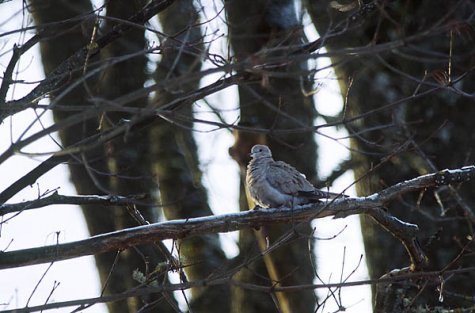Wintering collared doves
Photo: Arne Ader
Translation: Liis
Collared dove.
| Collared dove |
Kaelus– turteltuvi
|
Streptopelia decaocto |
The collared doves who winter in Estonia do so as urban park and forest stand dwellers. As the domestic pigeon, they are partly urbanised birds; winter is spent near humans; there were particularly many of them in Kuressaare (on Saaremaa, western Estonia), near bird feeders. Collared doves are slimmer and with a longer tail than the domestic pigeon. The number of wintering birds may be up to a thousand; migrants leave at the end of september.
The plumage of the collared dove is sand-coloured, with a slightly darker back, the eye is dark and the iris red. Its name-giving characteristic is the distinctive dark band at the neck - like the collar of a coat - which may be lacking in juvenile birds. The underparts of the body are paler in colour, and from the feet backwards whitish-grey. The whole leaves an impression of a clean and cheerful bird.
In many European languages the collared dove has names that refer to its introduction in Europe by way of Turkey: turkduva (Swedish), tourterelle turque (French), Türkentaube (German), tortorola turca (Spanish).









